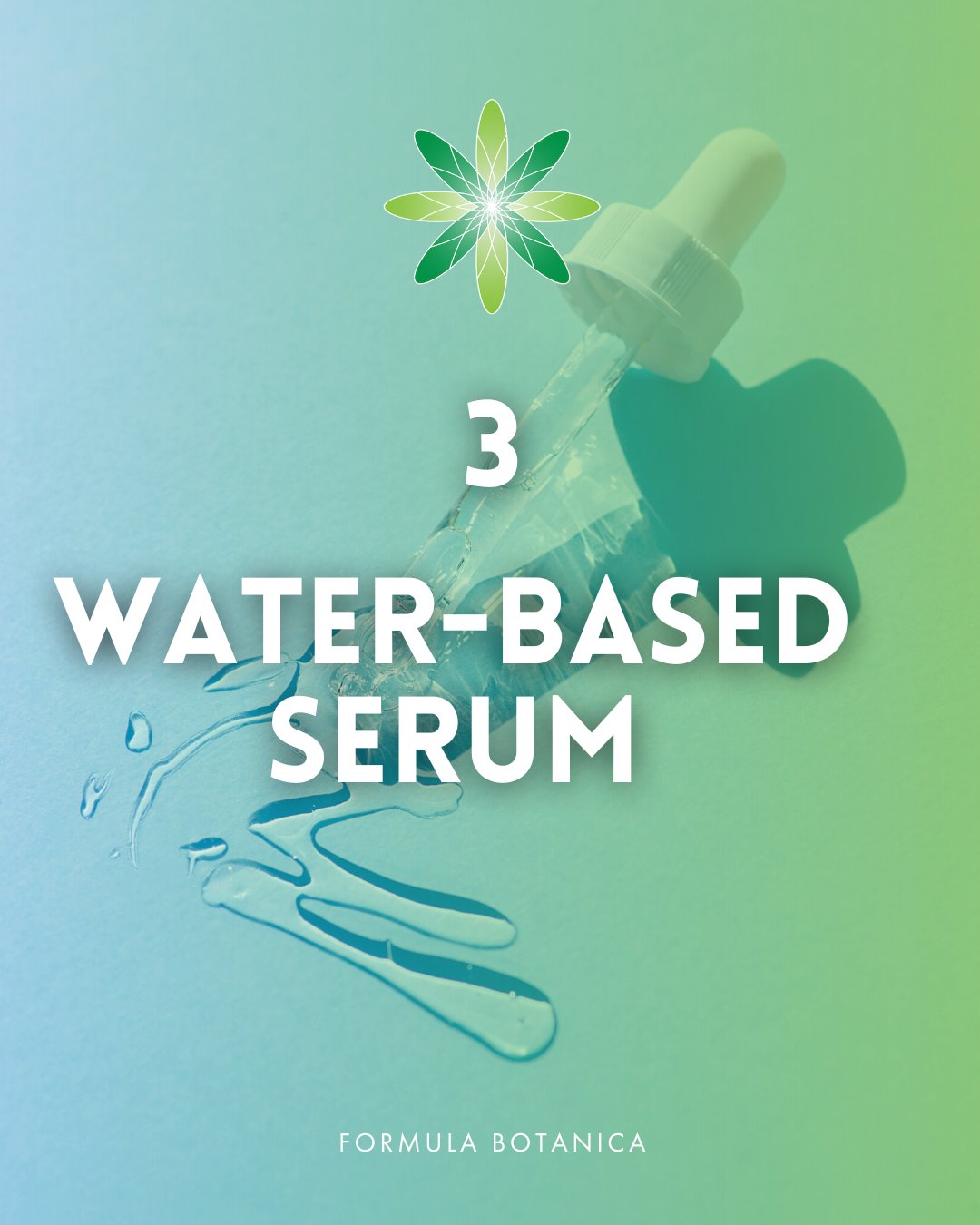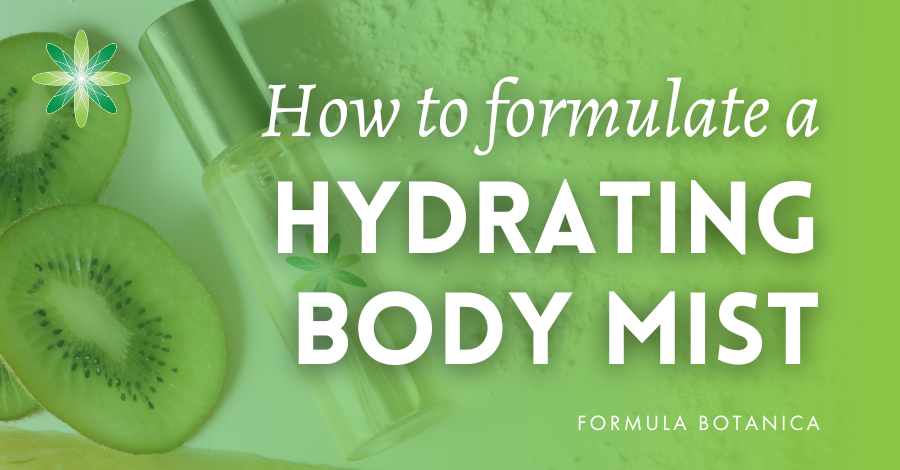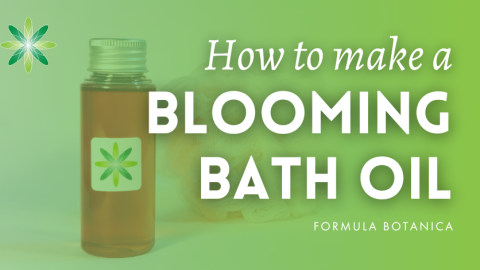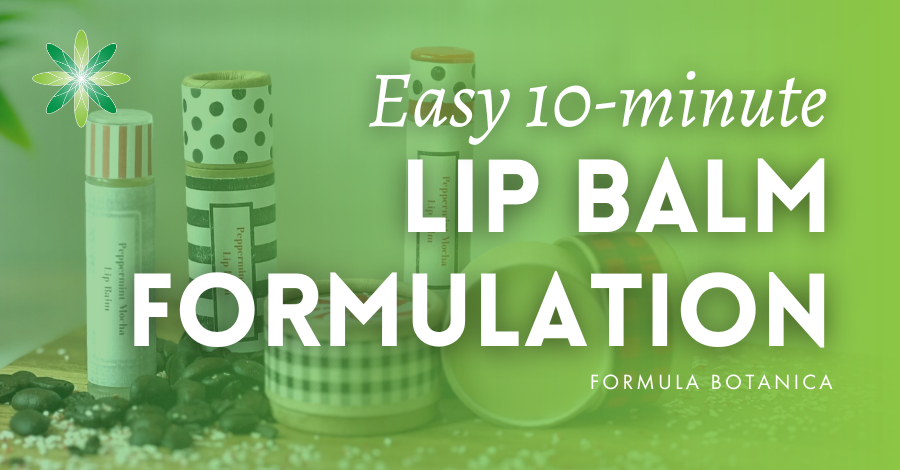Updated: 26.11.24
Have you ever wondered what exactly a facial serum is and why it’s so popular in skincare routines? You’re not alone—this is a question we frequently get from skincare formulators within our global community. With so many types of facial serums flooding the market, it’s easy to see why there’s confusion about what these products are supposed to achieve.
The term “serum” is widely used in the skincare industry, but its meaning can vary greatly. Depending on who you ask, a serum might refer to an oil-based product, a gel-based formula, or even a lightweight emulsion.
To clear up this confusion, we’ve put together this blog post to break down the different types of facial serums and help you understand what distinguishes each formulation. We’ve even compiled a list of free serum formulations for you to make at home!
What are face serums?
Face serums are concentrated skincare products packed with active ingredients designed to target specific skin concerns, such as hydration, ageing, or uneven tone.
Serums can come in various forms, including light emulsions, gels, water-based, oil-only, and pressed balms. They are typically applied daily after cleansing and toning but before moisturising, delivering potent ingredients directly to the skin.
How do you use face serums?
Although serum formulations are very different, they all have one thing in common – how people use them on their skin! So how are they used?
Serums are typically concentrated with active ingredients, so you just need a few drops. You usually apply them after cleansing and toning but use them before other skincare products to enhance their effectiveness.
Types of face serums
Find out about the 5 types of face serums you can make at home. Don’t forget to tell us which one is your favourite!
Let’s dive right in.
Oil serum
Oil serums are the easiest forms of serum to formulate, relying on fast-absorbing, high-end carrier oils known for their moisturising and barrier-repair properties. These luxurious oils, rich in polyphenols and essential fatty acids, nourish and support the skin’s health.
Check out these free oil serum formulations below:
How to make a night-time face oil for mature skin
How to formulate a simple face oil with African oils
How to formulate a restoring vitamin C face serum
You can also add oil-soluble extracts and essential oils or CO2 extracts to your serum, which add targeted skin benefits. The best part? No preservatives are needed, thanks to the absence of water. However, including an antioxidant is crucial to extend the shelf life of these sensitive plant oils and boost the serum’s anti-ageing effects.
Ready to create your own high-performance oil serums? Pre-enrol in our Certificate in Organic Anti-Ageing Skincare today.
Gel serum
Gel serums are a unique type of skincare product that combines the lightweight, fast-absorbing properties of a gel with the concentrated, potent ingredients of a serum. They deliver active ingredients deep into the skin, providing targeted benefits like hydration, firming, and revitalisation, all while leaving the skin feeling instantly tightened and refreshed.
These innovative serums are water-based, which means they’re the perfect medium for incorporating powerful hydrophilic botanical extracts. Whether you’re looking to create a product that soothes, brightens or lifts, gel serums offer a versatile base to work with. Find out how to make a gel serum below:
How to formulate a prebiotic gel serum
How to make a caffeine & pea natural under eye serum
The true challenge—and the thrill—of formulating a gel serum lies in achieving the perfect consistency. Whether you choose a dropper or pump bottle, your gel serum needs to have that perfect fluidity that makes it easy to dispense while protecting your powerful ingredients from air and light. We teach you how to achieve this perfect consistency in our Diploma in Organic Skincare Formulation.
Water-based serum
Water-based serums share similarities with gel serums but with a key difference—they typically contain fewer, if any, gums and thickeners. These serums are designed to deliver potent hydrophilic (water-loving) botanical extracts directly to the skin, where they can be effectively trapped beneath a cream or lotion. This creates an optimal environment for these water-based ingredients to penetrate deeper into the skin, enhancing their effectiveness. Find out how to create your own water-based serum:
A well-formulated facial serum starts with a base of water-based ingredients like hydrosols, known for their soothing, toning, and balancing properties.
To enhance the serum’s texture and ensure it adheres to the skin, humectants are included, drawing moisture into the skin for a lasting, hydrated feel. Many people love the dewy, plump sensation that humectants provide after applying a serum. To complete your formulation, infuse it with high-performance botanical extracts and essential oils or C02 extracts.
Ready to elevate your skincare formulations? Discover the art of creating high-performance facial mists and elixirs in our Advanced Diploma in Organic Cosmetic Science.
Emulsion serum
A facial serum in the form of an emulsion is not just a moisturiser; it’s a powerful delivery system for high-performance ingredients that nourish the skin while fortifying its natural barrier.
An emulsion works by seamlessly blending two immiscible phases—like oil and water—that typically resist mixing. This is made possible by an emulsifier, which bonds these phases together, creating a stable and effective formulation. Find out how to make an emulsion-based serum below:
Emulsions are particularly effective at delivering active ingredients deep into the skin’s layers. Penetrating down to the dermis is a formidable challenge due to the skin’s natural barrier, but the combination of oil and water in an emulsion is uniquely equipped to overcome this hurdle. In addition to its delivery power, an emulsion also provides essential moisturising benefits, further strengthening the skin’s barrier and enhancing its resilience.
Curious about mastering the art of organic emulsification? Our Diploma in Organic Skincare Formulation will guide you through the intricacies of creating these sophisticated blends.
Pressed balm serum
You might be looking at the lineup of facial serum formulations above and wondering, “Where does a balm serum fit into this mix?” But, as it turns out, the pressed serum opens up a world of exciting possibilities for the savvy skincare formulator.
Unlike traditional liquid serums, a balm serum stands out because it comes in a solid form. It is built on a classic balm foundation, featuring a blend of butters, waxes, and oils. Find out how to make a pressed balm serum below:
What makes a pressed balm special is the infusion of oil-soluble (lipophilic) active ingredients that offer targeted benefits to the skin. The butters and waxes form a nourishing, occlusive layer that locks in moisture while allowing the active ingredients to work their magic.
With an array of exotic butters and waxes to choose from, paired with hundreds of potent botanical oils, the possibilities for crafting a unique and effective balm serum are endless.
Ready to dive into the world of balm-making? Pre-enrol in our Diploma in Organic Skincare Formulation and start creating your own luxurious formulations.
Serum vs. essences & ampoules
Finally, we have focused on serums in this article but it is worth understanding that the humble facial serum is not the only skincare product on the market offering active benefits for the skin. If you follow K-Beauty, then you might also have come across essences and ampoules. What’s the difference? We’ve summarised it here for you.
Serum
- Purpose: Delivers high-performance actives
- Application: Apply after cleansing and toning, potentially after using an essence
- Consistency: Light, easily applied with a few drops
- Formulation: Typically emulsions, but also available in gel, water, oil, and balm forms
- Ingredients: Contains a decent concentration of active ingredients, sitting between essence and ampoule in terms of potency
- Frequency of use: Daily
- Packaging: Often packaged in high-end pump or dropper bottles
Essence
- Purpose: Adds a layer of hydration before serum application
- Application: Apply before a serum, after cleansing and toning
- Consistency: Lightweight, similar to a toner
- Formulation: Comparable to a toner that offers a skin treatment
- Ingredients: Lower concentration of active ingredients
- Frequency of use: Daily
- Packaging: Often packaged similarly to toners
Ampoule
- Purpose: Delivers super concentrated high-performance actives
- Application: Apply when required to tackle specific skin issues
- Consistency: Light and easily absorbed; some ampoules feel slippery
- Formulation: Contains minimal functional ingredients to maximise active concentration
- Ingredients: Very high concentration of active ingredients—some brands claim as high as 50%
- Frequency of use: When required
- Packaging: Often sold in single-use packaging, vials, or small bottles
FAQ
- What is a serum and how do you use it?
Face serums are potent skincare products packed with active ingredients tailored to address specific skin types, concerns, and needs. Available in various forms—such as light emulsions, gels, water-based, oil-only, and pressed balms—serums are meticulously formulated to deliver targeted results. Typically, serums are used daily after cleansing and toning but before applying a moisturiser.
- How do you apply a face serum?
Start by cleansing and toning your skin to prepare it for better absorption. Take a few drops or a small squirt of serum and apply it directly onto your fingertips. Gently dab the serum onto your forehead, cheeks, and chin, then massage it into your skin with light, upward strokes. Give the serum a few minutes to fully absorb before moving on to your moisturiser or the next steps in your skincare routine.
- What is the best type of natural face serum?
There is no single, one-serum-fits-all product or brand of serum on the market. Your choice of facial serum depends on your specific skincare needs and preferences. Serums come in many different types with active ingredients designed to target specific skin areas and issues. Gel and water-based serums may contain humectants which may leave a slightly sticky feel on the skin. Anhydrous serums like oil or pressed balm serums may have too heavy or greasy a skin feel for your liking. Do your research on your needs and the formulation types available.
Leave us a comment
Lorraine Dallmeier is a Biologist, Chartered Environmentalist and the CEO of Formula Botanica, the award-winning online organic cosmetic science school. Read more about Lorraine and the Formula Botanica Team.



































